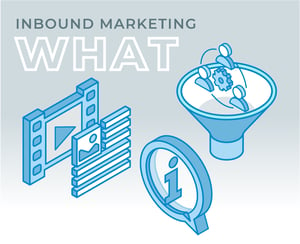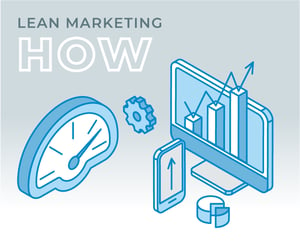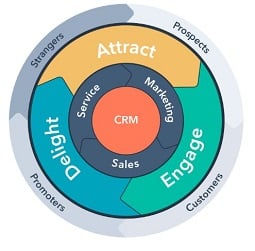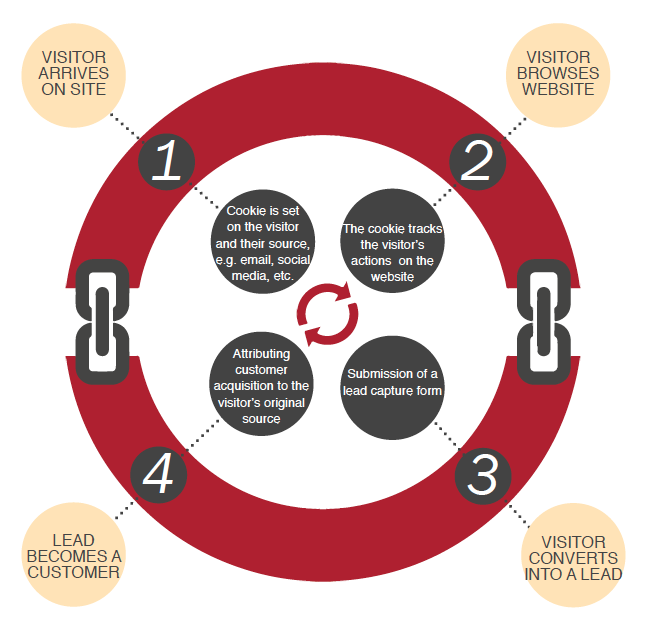Want to save time? Use these 6 inbound marketing tools
The value of inbound marketing cannot be overstated. It can be massively beneficial to your business, and positively impact its growth and success. ...

Lean inbound marketing is an approach to sales, marketing, and customer service that combines the best of two worlds:
Inbound marketing is a business methodology that attracts customers and helps companies grow by creating content and experiences tailored to the customer. Inbound marketing forms connections by providing customers what they are looking for to solve their problems.
Lean marketing (aka marketing automation) uses technology to create efficiencies that are otherwise unattainable with traditional marketing. Lean marketing helps you implement inbound marketing and get the most from your resources and investments.


Think of inbound marketing as the “what” and lean marketing as the “how” of lean inbound marketing. When combined, inbound marketing and lean marketing form a win-win scenario:
If your marketing efforts aren’t as productive as you’d like, the lean inbound marketing strategies described here can help.
Table of Contents
Key Takeaways
As described earlier, lean inbound marketing builds on the tenets of inbound marketing.
When implemented using lean practices, inbound marketing is more effective.
It all revolves around three principles:
To attract customers and prospects, companies must establish themselves not as salespeople but as trusted advisors, educators, and allies.
To engage prospects and customers, companies must provide guidance and solutions to the customer’s pain points. In short, build trust through knowledge. Once that is done, prospects are more likely to buy.
When companies attract and engage (rather than sell), they facilitate trusting partnerships, making customers and prospects happy. What’s not to like about that?
The flywheel is a business model adopted by a leading marketing automation platform, HubSpot, to illustrate the momentum an organization can gain by prioritizing and delivering exceptional customer experience.
The flywheel is a replacement for the old-fashioned sales funnel, which was linear and through which customers were flushed through. Why is the flywheel better?
With the flywheel, your marketing, sales, and service functions can add force and eliminate friction throughout the attract, engage, and delight phases. All organizational functions are also responsible for removing friction from your flywheel.
Once you attain enough customers and engage and delight them, they can keep your flywheel spinning by promoting your organization and bringing new customers to you. Over time, your flywheel allows you to grow without continually investing in customer acquisition.
Let’s unpack some more inbound marketing strategies.
Now that we’ve established the three lean inbound marketing principles and seen how they are integrated into the Flywheel, it’s time to identify how to make them happen. Below are useful strategies to attract, engage, and delight customers.
One of the best ways to attract prospective customers is through free, educational content. Think critically about their needs and use content that addresses their pain points and solves their business problem. Why? Because helping is establishing trust. And, when trust is established, qualified prospects are more likely to engage those who have helped them first.
To attract visitors, create blogs, downloadable guides, and videos that offer value. This content may provide information about using your products or services and provide insights and strategies that consumers can immediately use.
Position yourself as an educator and always help.
Solution sellers ask, “How can I be of service?” Salespeople ask, “What can I sell you?” There’s a subtle but critical difference between the two questions. As you engage with consumers, ensure that you’re solution selling rather than product selling.
One way to sharpen your customer engagement strategy is by using push notifications. These are short messages that pop up outside of the browser while audiences browse your website. These push notifications may connect your audience to customer support or allow them to opt in for free content, events, or discounts.
A more general approach asks you to take a critical look at how you engage with customers over the phone. If you don’t have a telecommunications strategy, start there.
If you’re looking for a good example of effective engagement, Sweetwater (an online retailer of music and pro audio equipment) is a great example. If there’s a lull in communication, Sweetwater reps make quarterly calls to their audience to check in, ask about previous purchases, assess satisfaction, and answer any questions. These calls are brief, casual, and “unsalesy.”
Of course, Sweetwater reps are hoping that consumers will make additional purchases. But that is never, ever mentioned in the call. If you think about your own experiences, customers do business with businesses that help them.
Nothing delights humans more than being seen, heard, and understood. You can disarm even the most hostile person simply by listening, asking for clarity, empathizing, and then saying, “Is there anything I can do to help?”
To delight your customers, listen to them and ask for feedback. Then assist and support. You can delight customers by incorporating well-timed chatbots and surveys into their website browsing experience. Or, you can do it the Sweetwater way and make quarterly calls to check in, ask questions, and solicit feedback.
These are simple acts that don’t cost you a penny. Yet customers are delighted by it.
For each of the strategies described above, a lean marketing automation platform like HubSpot, combined with the help of an expert agency like ours, helps accelerate the flywheel in the following ways.
Build content repositories to store and present content customers want
Build landing pages to offer content and capture information
Manage social media campaigns automatically
Manage paid media campaigns automatically
Create email sequences for salespeople
Create email workflows to share content with customers based on customer behavior
Creating website chatbots
Creating website notifications and sign-up forms
Automating the sending of reminder emails
Creating customized, personalized content based on customer preference
Suggesting additional products, services, and content to customers
Creating and sending customer satisfaction surveys automatically
Send renewal reminders
Informing customers of new products and services
Creating knowledge-bases
Providing a platform for support and service teams
Automating the creation of help desk tickets and logs and follow up
We’ve been practicing and teaching our lean inbound marketing methodology for more than a decade and a half. And in that time, we’ve helped countless companies of all sizes. No matter where you’re at in your marketing journey, we can help.

The value of inbound marketing cannot be overstated. It can be massively beneficial to your business, and positively impact its growth and success. ...

Visualizing Closed-Loop Marketing To understand WHY closed-loop marketing works – and it does – you’ll first need a better understanding of HOW it...

If you run a business or work in a marketing department, you may have heard the phrase “content is king.” This phrase, made popular by Bill Gates,...